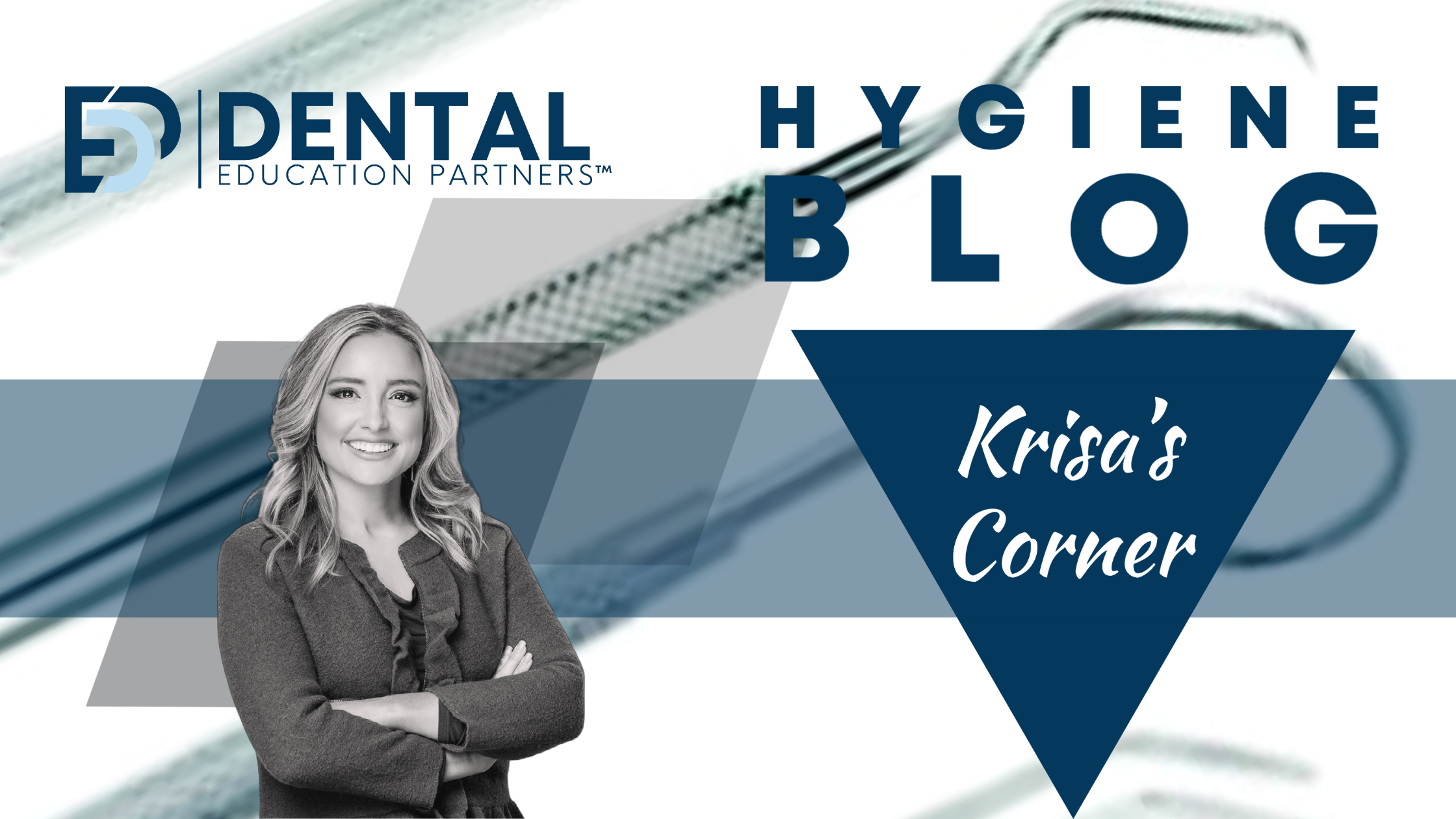Summer is a busy time for many of us, especially when it comes to caring for kids and adolescents. This is a great opportunity to focus on preventive dentistry, such as fluoride treatments and sealants, to help prevent tooth decay. However, it’s important to remember that preventive dentistry is just as important for seniors and those with dry mouths. Tooth decay is the most common oral disease, but it’s also one of the most preventable. As dental professionals, it’s essential that we take a proactive approach to patient care, rather than simply reacting to problems as they arise. One important step in this process is to perform a caries risk assessment on all patients. By being proactive and implementing a preventive protocol in your office, you can help improve clinical outcomes and provide better care for all.
Caries Risk Assessment
Decay is a multifactorial disease which means “drilling and filling” is not always the answer. We must look at the whole picture. First, we need to identify the patient risk so that we can establish a definitive plan of action for the long-term management of the disease. If your office does not currently implement a caries risk assessment, you should consider doing so. Mentioned in the Frontiers April 2021 edition1, there are several types of caries risk assessments:
- CAMBRA (Caries Management by Risk Assessment)
- ADA (American Dental Association)2
- AAPD (American Academy of Pediatric Dentistry)3
- Cariogram4
There are now many technological advancements available to help aid in the diagnosis and treatment of decay including intraoral cameras, intraoral scanners with caries detection tools, and even AI (artificial intelligence, such as Videa Health). Whichever method you choose, consistency is key to ensuring success, along with regular CRAs and radiographs every six months, if possible, to prevent progression.
Caries prevention and management
When discussing caries management with the patient, it is important to explain risk factors associated with caries such as poor oral hygiene, frequent snacking on sugary or acidic foods, and not receiving regular dental check-ups. By understanding these risk factors, patients can take proactive steps to prevent caries and maintain good oral health. Other risk factors that should be looked at closely include:
- Dry Mouth
- Medical conditions
- Medications
- PH imbalance
- Smoking/Vaping
- Alcohol
As we know, it takes 21 days (about 3 weeks) to form a habit, so You cannot expect them to change their lifestyle overnight and the way you communicate should come from a standpoint of concern and education not belittling. It may take peeling back the layers and breaking down walls to get to the real problem. Sometimes it is related to poor mental hygiene.
The patient with elevated risk and no decay should be educated on sealants. Remember, the patient doesn’t know what we fail to tell them. I recommend sealants on all permanent posterior teeth to include premolars and deep cingulum grooves on lateral incisors.
The way I lead into the conversation is to say, ” may I make a recommendation?” That leaves them to say almost always, yes to which I will reply, ” well, you have deep grooves in your teeth and based on your anatomy and risk factors, you are susceptible to decay. “I have a protective barrier that I can apply to seal the grooves and decrease your chances of getting a cavity.”
Patient: “How long will they last?”
Me: “I will apply a light to harden it which will protect your tooth for many years to come, as long as you do not chew hard candy or chew ice.” I would also take it a step further to reassure them that I will be checking the sealants at every visit to ensure they are intact and reseal them if necessary.
Patient: Well, how much is it?
Me: Well, it’s a third of the cost of a filling and minimally invasive with no numbing or drilling needed.
Patient: Sign me up!
Very few adult patients say, “Well, I will wait for the cavity to be filled because insurance will cover the filling but not the sealant.” Don’t go down that rabbit hole.
Remind the patient that it is your goal to keep them out of the Dentist’s chair!
For kids, you can say, “I am applying some shampoo and conditioner to your tooth to protect it and make it strong.” For kids and adults, if multiple teeth in a quadrant need to be sealed, I will etch all teeth at the same time if there is proper isolation and a cooperative patient. This saves time and is more productive. I personally like to use an etch tip for both etchant and sealant to prevent a bulky and unpredictable flow. As a side note, at our office, we charge for sealants if it’s been over 2 years and we need to reapply, but some offices only charge once.
For incipient decay in kids:
- Flag Xray software to alert decay
- Recommend a 3-month recare.
- OHI- (I.e., Electric TB and floss technique) Two-tone disclosing solution
- Diet modifications
- Behavior modification
- Salivary testing if available
- Probiotics (Probiora or Culturelle)
- Curodont repair on ages 4+
Setting a timer in the bathroom to 2 minutes for brushing time, instructing to brush the gums as well as the teeth. Demonstrate how to brush the patient and have them show you as well. This helps clear up any struggles they may have with technique. Many kids have electronic devices and can use their timer on these devices.
You can apply fluoride varnish, dispense mi paste (GC) for < 6yrs old or mi paste plus (GC) for >6yrs old, or take-home fluoride toothpaste (Prevident 5000 by Colgate) if over the age of 6. Silver Diamine fluoride (Advantage Arrest or Fluorimax by Elevate oral care) application is always a great option as well when dealing with sensitivity due to decay. Curodont repair is the latest arresting medicament (D1354).
For incipient decay in adults:
- Flag Xray software to alert decay
- 3-month recare
- OHI- Electric Toothbrush (Sonicare Diamond, Oral-B Braun, Burst or Crest spin brush to name a few. Waterpik, traditional waxed floss, POH or satin, depending on the contacts of the teeth.
- Diet and behavior modification
- Apply sodium fluoride varnish/ SDF and dispense take-home fluoride toothpaste.
- Salivary testing options if available (SillHa, Bristle to name a couple)
- Probiotics (Probiora has many options for all ages)
* Probiotic strains that are known to promote oral symbiosis as written by Mark Burhenne, DDS on the benefits of oral probiotics and best strains, including:5
- Lactobacillus reuteri
- Streptococcus salivarius K12
- Lactobacillus paracase
- Lactobacillus salivarius
- Streptococcus salivarius M18
- Lactobacillus sakei
*If salivary testing is not available, you can purchase Litmus paper on Amazon to verify the pH of the patient’s mouth.
Particularly for seniors, I recommend Prevident 5000 toothpaste which has options for sensitive patients with the ingredient Potassium Nitrate or dry mouth formula with no SLS (sodium laurel sulfate) which can exacerbate aphthous ulcers if the patient is prone to them. My preferred rinse for this population is Closys or Oracare. An electric toothbrush should be recommended as to how to properly angle the toothbrush to eliminate plaque biofilm, flossing technique (traditional waxed vs picks), nutritional counseling to eliminate acid and refined sugars, mints, etc. Certain foods and even water can be highly acidic.6
This can be concerning for seniors who may have sensitive digestive systems. If accompanied by a caregiver, it may be helpful to review homecare tips and ensure they’re taking steps to manage their diet and hydration. Modifications can be made such as using a toothbrush with a larger handle or making it longer or wider. Finger brushes and reach floss are also an option for limited dexterity. In addition, you can find other toothbrushes online by searching for toothbrushes for limited dexterity. Try typing in any web browser “toothbrush for limited dexterity” and you should find many suitable options.
Thank you for reading this blog post on how to address and manage caries risk patients. I hope that you found the information helpful as well as gaining some new communication tips for opening the patient dialogue with prevention. My goal for providing these tips and strategies is to assist with the implementation of a strong preventive protocol and scripting for your practice. Be sure to check out the resources provided for additional support and follow my blog for more helpful content in the future.
-Your Hygiene Coach
References:
1. Frontiers | A Comparison of Four Caries Risk Assessment Methods (frontiersin.org). https://www.frontiersin.org/articles/10.3389/froh.2021.656558/full Accessed July 10, 2023
2. ADA Caries Risk Assessment. https://www.ada.org/-/media/project/ada-organization/ada/ada-org/files/resources/public-programs/give-kids-a-smile/gkas_caries_risk_assessment_forms.pdf Accessed July 10, 2023
3. AAPD (American Academy of Pediatric Dentistry) https://www.aapd.org/globalassets/assets/1/7/use_of_cat-charts.pdf Accessed July 10, 2023
4. Cariogram Dental Caries Risk for iOS. https://download.cnet.com/Cariogram-Dental-Caries-Risk/3000-2129_4-78475545.html Accessed July 10, 2023
5. M. Burhenne, DDS. Benefits of Oral Probiotics & Best Strains. Ask the Dentist. https://askthedentist.com/oral-probiotics/ Accessed July 10, 2023
6. PH Chart of Alkaline and Acidic Foods. Waking Times. https://www.wakingtimes.com/ph-chart-of-alkaline-and-acidic-foods/ Accessed July 10, 2023


